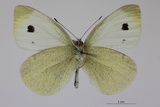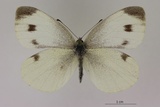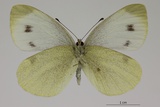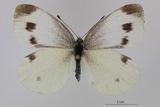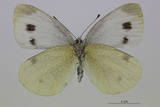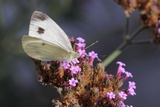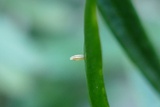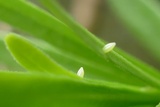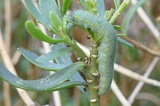Pieris mannii (Mayer, 1851) Species
Last modified: Sept. 13, 2025, 11:51 a.m.
A recent arrival in Belgium. Expanding its Mediterranean range since at least 2008, first sightings in Belgium in 2016.
Details
- Classification
- Family: Pieridae > Subfamily: Pierinae > Tribus: Pierini > Genus: Pieris > Species: Pieris mannii
- Vernacular names
- Scheefbloemwitje (NL), Piéride de l'ibéride (FR), Karstweißling (DE)
- First mention in Belgium
- De Prins W. 2016. Catalogus van de Belgische Lepidoptera – Catalogue of the Lepidoptera of Belgium. — Entomobrochure 9: 1–279. On page 130.
- Status
-
Native
Distribution
Imago
This species closely resembles Pieris rapae, the wing shape is a little more rounded, the black markings on the upperside are more accentuated and the shape of the discoidal front wing spot is often more rectangular.
Egg
The egg is pale yellowish and is a bit shorter and broader than the egg of Pieris rapae. Eggs are laid singly on the underside of the leaves of the larval foodplant.
Caterpillar
In the first two instars, the larva can be identified by the black head capsule (same colour as the body in Pieris rapae). In the third instar, this head capsule turns greyish. Older caterpillars resemble Pieris rapae caterpillars but often have a more bluish hue to the green body colour and the yellow dorsal line and lateral spots are even more present.
Flight periods
At least three but up to five generations per year from April to October.
Observed on
- Host plant (species):
- Sinapis arvensis, Alliaria petiolata, Diplotaxis tenuifolia, Brassica oleracea, Sinapis arvensis and Iberis sempervirens
- Host plant (genera):
- Iberis, Diplotaxis and Sinapis
Several Cruciferae are used, in Northwestern Europe mainly Iberis and Diplotaxis.
Research has shown that butterflies that recently colonized an area have a different preference for host plants than native butterflies, including Alliaria petiolata, Diplotaxis tenuifolia, Brassica oleracea and Sinapis arvensis.
Habitat
In Southern Europe this is a species from rocky, often calcareous environments. In the expansion zone in Central and Northwestern Europe it uses suburban gardens and road sides where larval foodplants can be found in a similar xerothermic context.

